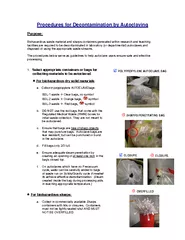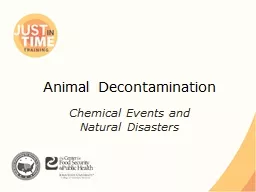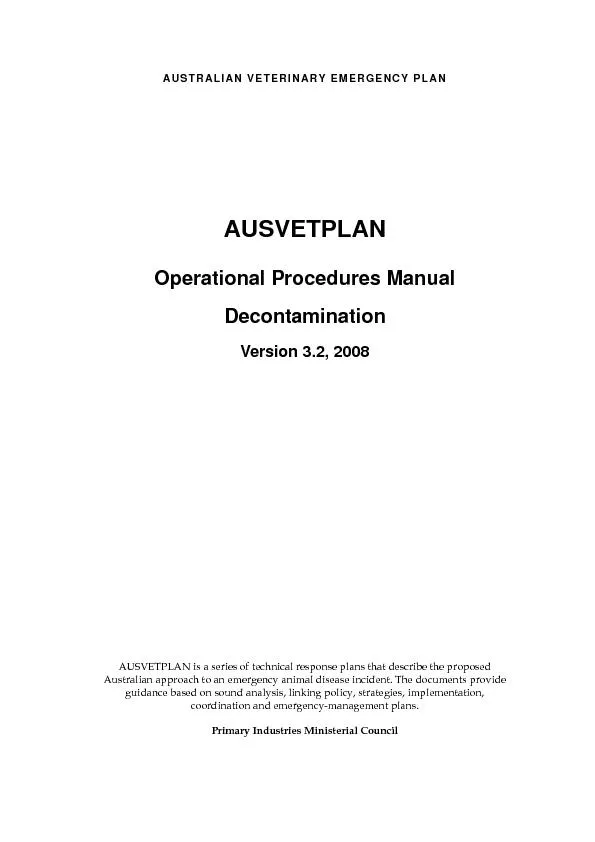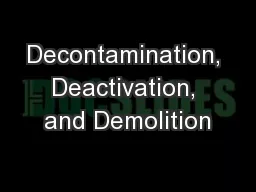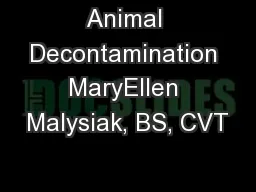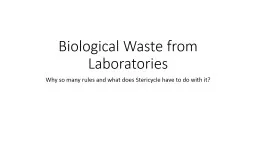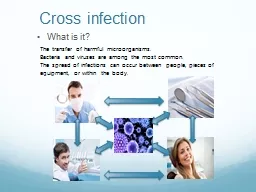PDF-Procedures for Decontamination by Autoclaving Purpose
Author : karlyn-bohler | Published Date : 2015-05-25
The procedures below serve as guidelines to hel p autoclave users ensure safe and effective processing 1 Select appropriate containers or bags for collecting materials
Presentation Embed Code
Download Presentation
Download Presentation The PPT/PDF document "Procedures for Decontamination by Autocl..." is the property of its rightful owner. Permission is granted to download and print the materials on this website for personal, non-commercial use only, and to display it on your personal computer provided you do not modify the materials and that you retain all copyright notices contained in the materials. By downloading content from our website, you accept the terms of this agreement.
Procedures for Decontamination by Autoclaving Purpose: Transcript
The procedures below serve as guidelines to hel p autoclave users ensure safe and effective processing 1 Select appropriate containers or bags for collecting materials to be autoclaved POLYPROPYLENE AUTOCLAVE BAG For biohazardous dry solid materials. Animal Care Personnel RESPONSIBILITY: Facility Manager and Technical Staff PURPOSE: To Outline the Proper Procedures for Decontamination of Animal Research Facilities and Equipment 1. T Chemical Events and . Natural Disasters. Risks. Natural disasters. Floods, hurricanes, . tornadoes, earthquakes. Agricultural or . industrial . Chemical spill. Gas leak. Terrorism/criminal event. Chemical toxins. Deborah J Persell, PhD, RN, CNP. St. Louis -- 2008. Industrial Accident. Three self-report to St. Anthony’s. Three self-report to DePaul Health Center. Two report to St. Louis University & Barnes Jewish. AUSVETPLAN Operational Procedures Manual Decontamination Version 3.2, 2008 AUSVETPLAN is a series of technical response plans that describe the proposed Australian approach to an emergency animal Presentation to: 8 Hour Operations Class. Presented by: DPH Trainer the Trainers. Date:. Question 1:. During decon, hospitals . must. make an attempt to capture and retain as much runoff from victim and/or mass casualty decontamination operations as possible to comply with EPA and other environmental laws.. Satish Sinha . History of medical waste. Medical Waste Tracking Act in US. I Draft Rules in India–1995. Final Rules in 1998, 2 amendments and 5 guidelines. Evolution of Rules and Practices through National Experiences. Presented by:. Nacer Khalil. Table of content. Introduction. Definition of robustness. Robust Kernel Density Estimation. Nonparametric . Contamination . Models. Scaled project Kernel Density Estimator. Use the Slide Master to make universal changes to the presentation, including inserting your organization’s logo. “View” tab > “Slide Master”. Replace placeholders (indicated by brackets [ ]) with information specific to your exercise. David. S. Rhodes. Acquisition Integrated Project Team . Chair. Environmental Management Los Alamos Field Office. March 3, 2015. Framework for DD&D. Decontamination and Deactivation. Some Technical Area (TA) 21 facilities have been adequately surveyed to allow demolition debris disposal, while building 257 requires some decontamination and equipment removal. ASPCA Animal Poison Control Center. Urbana,IL. Decontamination is all about preventing absorption. Decontamination is very important as there are very few antidotes . Decontamination is performed in the asymptomatic animal. Why so many rules and what does Stericycle have to do with it?. Yes. Your lab waste is regulated.. MA state regulation 105 CMR 480.000. Human blood and materials contaminated with human blood. Human parts, tissues, fluids . Session 2 – Lesson Three. Learning Objectives. Discuss pre-deployment considerations for participation in disaster response, including team activation and motivation, risk awareness and mitigation, education, training, and personal fitness for duty. The transfer of harmful microorganisms. . Bacteria and viruses are among the most common. . The spread of infections can occur between people, pieces of equipment, or within the body. . Infection control and HTM. Biosafety in Microbiological and Biomedical Laboratories (BMBL) th Edition Section IV Biosafety Level Biosafety Level 3 (BSL3) is suitable for work with indigenous or exotic agents that may cause ser
Download Document
Here is the link to download the presentation.
"Procedures for Decontamination by Autoclaving Purpose"The content belongs to its owner. You may download and print it for personal use, without modification, and keep all copyright notices. By downloading, you agree to these terms.
Related Documents

